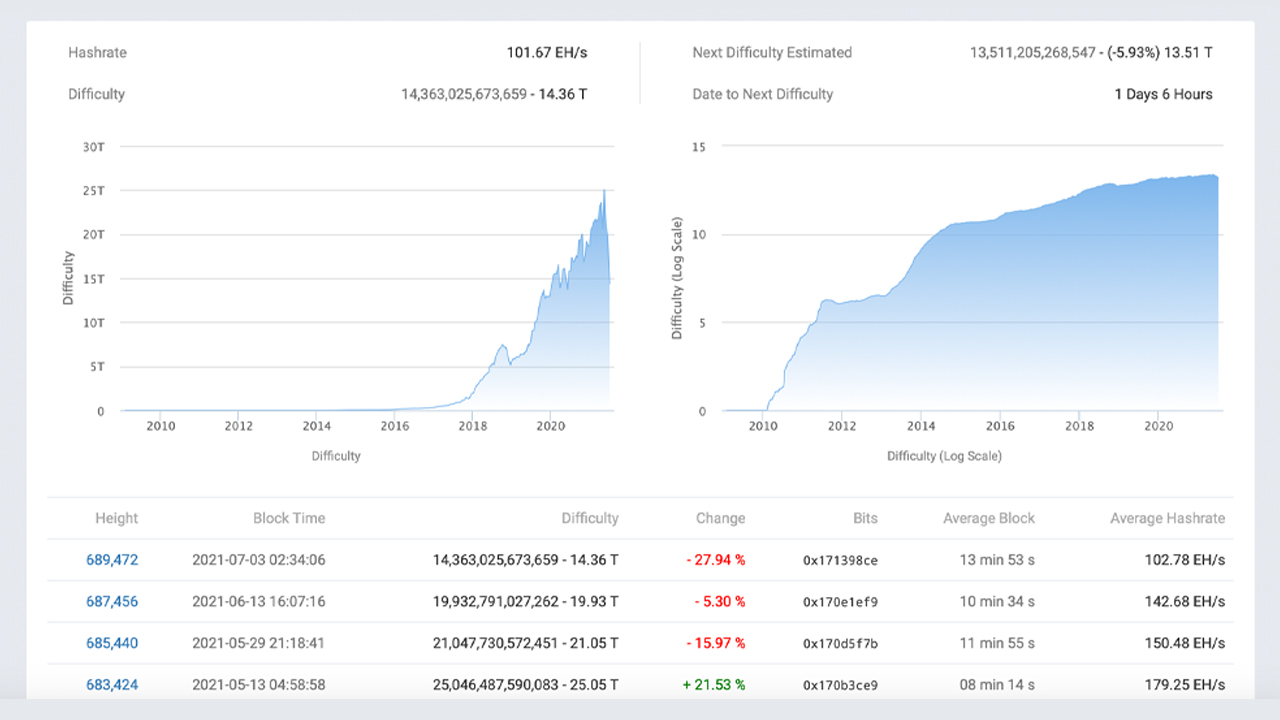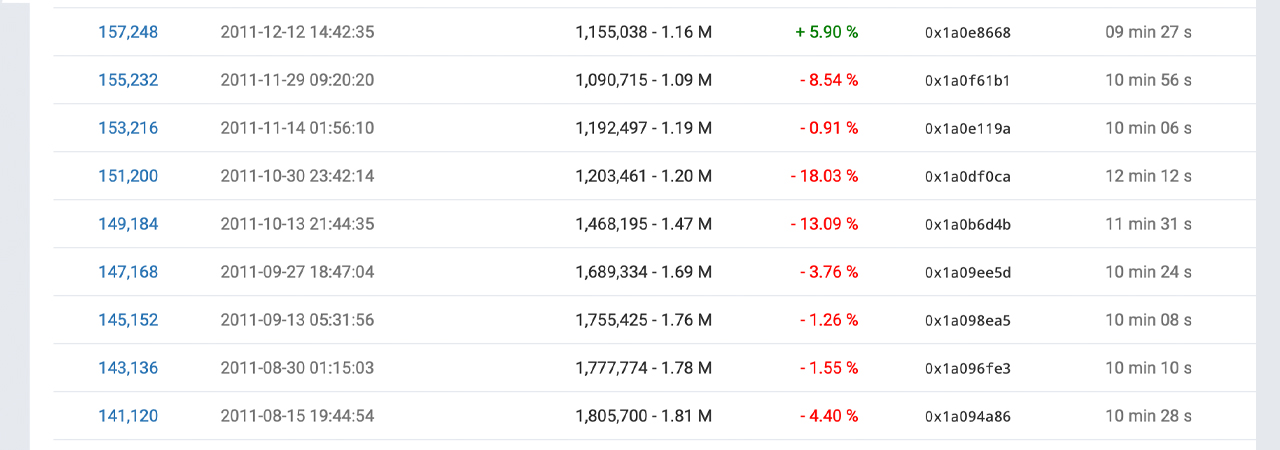4 Consecutive Difficulty Drops Make Bitcoin Block Rewards 49% Easier to Find
Publikováno: 17.7.2021
 Following the largest mining difficulty drop in Bitcoin’s history, this weekend will once again see another slide, but less than 6% of the difficulty will be shaved. Statistics show Bitcoin’s hashrate has been able to climb higher since the difficulty drop two weeks ago, and climbed above 100 exahash per second (EH/s) this week. This […]
Following the largest mining difficulty drop in Bitcoin’s history, this weekend will once again see another slide, but less than 6% of the difficulty will be shaved. Statistics show Bitcoin’s hashrate has been able to climb higher since the difficulty drop two weeks ago, and climbed above 100 exahash per second (EH/s) this week. This […]

Following the largest mining difficulty drop in Bitcoin’s history, this weekend will once again see another slide, but less than 6% of the difficulty will be shaved. Statistics show Bitcoin’s hashrate has been able to climb higher since the difficulty drop two weeks ago, and climbed above 100 exahash per second (EH/s) this week. This weekend’s upcoming bitcoin mining difficulty drop will be the only time in history the difficulty slipped four times in a row.
2021’s Consecutive Difficulty Drops Come Awfully Close to 2011’s Records
After China cracked down on bitcoin miners at the end of June, a large quantity of hashpower had temporarily halted. Statistics indicate that the hashrate was around 66 EH/s on June 28 and since then it has increased to above the 100 EH/s zone.
There’s currently 18 known mining pools dedicating hashrate to the BTC chain, and 4.71 % of the global hashrate (24-hour stats) or 4.79 EH/s belongs to unknown miners.

Two weeks ago the Bitcoin network saw the largest difficulty drop ever and another difficulty drop is expected this weekend. Using today’s average hashrate, statistics show the drop will be less than 6% bringing the current difficulty of 14.36 trillion down to 13.5 trillion.
This means after the dip, the mining difficulty will have dropped four times in a row. The last time the BTC mining difficulty dropped more than four times in a row was in 2011. From August to November 2011, the mining difficulty dropped eight times in a row.
2018 Saw Three Difficulty Drops in a Row, Five Mining Pools Currently Command 59% of Bitcoin’s Hashrate
The only other time BTC’s mining difficulty came close to the four times in a row record was in 2018 for three consecutive difficulty drops between November and December.

The most recent number of difficulty drops saw 49.21% shaved off the difficulty, which is slightly less than the 51.54% shed in 2011. Back then, the difficulty tapped a high of 1.89 million in August and by November it was 1.09 million at block height 155,232.
At the time of writing, the top mining pools on Friday afternoon include Viabtc, Antpool, Poolin, F2pool, and Btc.com. These pools are followed by Binance, Foundry and Slushpool, but the top five operations command 59.4% of the global hashrate.
Binance, Foundry and Slushpool capture 21.9% of BTC’s hashpower on Friday afternoon. That leaves ten known pools and 4.79 EH/s of unknown hashpower, commanding 18.7% of the global hashrate.
What do you think about the four difficulty drops in 2021 compared to the eight drops in 2011? Let us know what you think about this subject in the comments section below.